- Bernard Preston homepage
- Beekeeping
- Plant Indigenous Trees for Bees
Plant indigenous trees for bees
Plant indigenous trees for bees like the lovely Halleria lucida; the Spekboom too is easy to grow.
This magnificent Halleria lucida is a beautiful indigenous tree that comes from Southern Africa; its reddish-flowers produce copious amounts of nectar for honeybees, other insects and sunbirds too.
My apologies about the lime tree in the foreground but this is the best-view I could get; of course, citrus is also in part dependent on bees for pollination.
Halleria Lucida
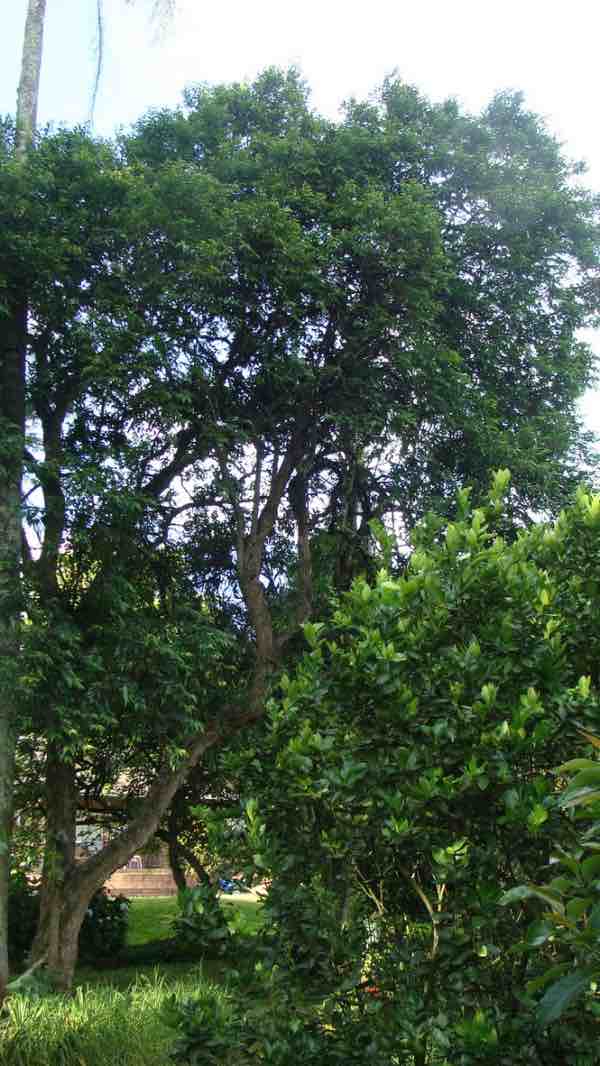
This page was last updated by Bernard Preston on 9th June 2025.
The common name for the Halleria is the tree-fuchsia because of the
hanging blooms that oddly are found along the branches. Thus they are somewhat hidden; it is the profuse buzzing sound
of the insects that draws one's attention to them.
Most gardeners whilst not being against exotics, would rather plant indigenous trees for bees if they equally fit the bill.
Halleria lucida is a particularly beautiful, small evergreen tree that can be grown very easily by slipping or from seeds.
It thrives quite quickly initially; the specimen above is over 30 feet tall and if other trees in our garden are anything to go by, it could be 100 years old.
Certainly it was already quite large when we moved here more than four decades ago.
Do not plant it near a swimming-pool; the flowers and leaves fall into the water creating a mess. We were pleased that one in our neighbour's garden was blown over in a tornado; constant sweeping of the surface was necessary when it was in bloom.
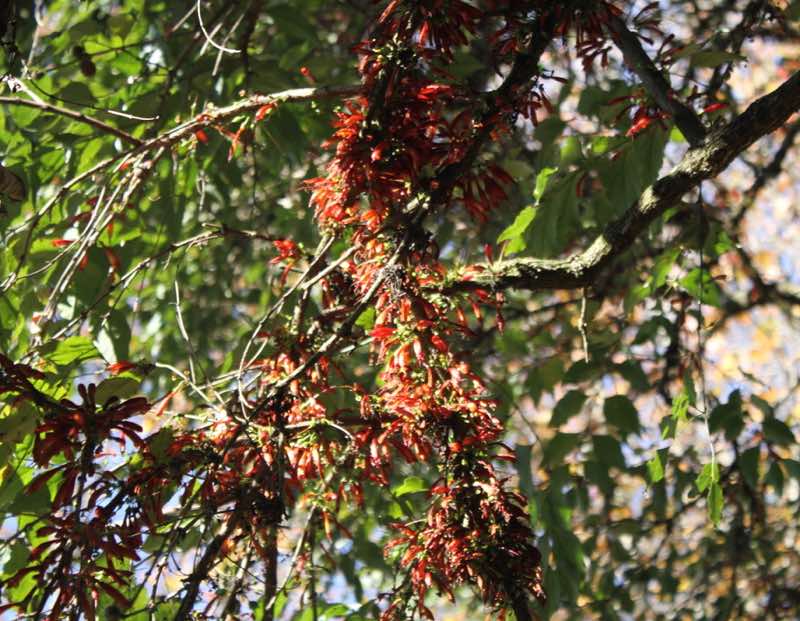
Out in the open it will grow into a broad shrub-like tree. The specimen above is perhaps more typical in that surrounded by other evergreens, it is tall and graceful.
It is a beauty to behold; we, the bees and all tree-huggers love Halleria lucida.
In water-scarce countries like Southern Africa large numbers of Eucalyptus are being felled because they apparently draw up huge amounts and deny our dams; interestingly a prominent forester says that is completely untrue but the myth endures. The problem is that other exotic invader species like Bugweed immediately spring up turning the area into an ugly jungle.
Companies given the responsibility to fell these insect-friendly Eucalyptus giants should be compelled to plant indigenous trees for bees like our Halleria lucida in their place.
It is one of the strange contradictions of our world that whilst we are calling for the planting of more forests, we are simultaneously demanding that trees like Eucalyptus should be felled.
Plant indigenous trees for bees which are beautiful and support threatened insects; and nectar-loving birds too.
The sunbirds in our garden have made their nest in a very high palm tree, seen at the immediate left next to the Halleria; in fact the nectar-rich blooms are probably just five metres below their hiding place.
Unfortunately the African harrier-hawk or gymnogene as it is known, has discovered the nest and makes regular forays in the summer; he is not averse to my chicks either.
Plant indigenous trees for bees
That hawk also terrorises our hens but to date has not taken one; now that we are about to start breeding poultry, I know that it will attack the chicks. That is nature and they must feed to survive too.
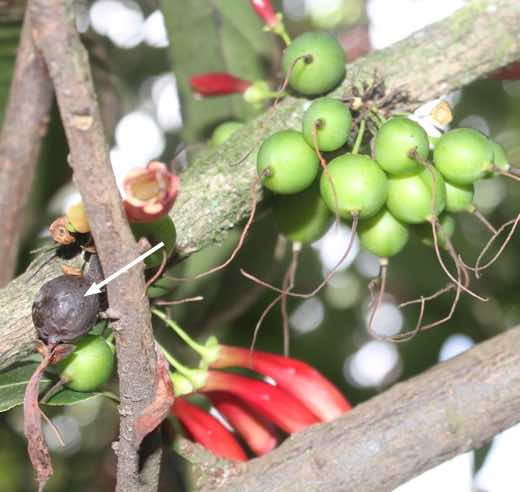 Notice the ripe Halleria Lucida fruit; arrowed.
Notice the ripe Halleria Lucida fruit; arrowed.There are always interesting birds and bats in the evenings arriving to feed on the fruit that is in season. Between them and the bees there is plenty of fascinating wildlife to enjoy in a green garden.
This is a magnificent indigenous tree for bees that could and perhaps should be in almost every garden. You will never tire of it or the creatures that come to visit.
The purplish fruit can be planted with considerable success.
Because our little pollinators are in such dire straits worldwide, it behooves us all to do our best to plant indigenous trees for bees to boost their food sources.
Either we all take responsibility for caring for the environment or future generations will have to live on a barren shore.
Citrus for bees
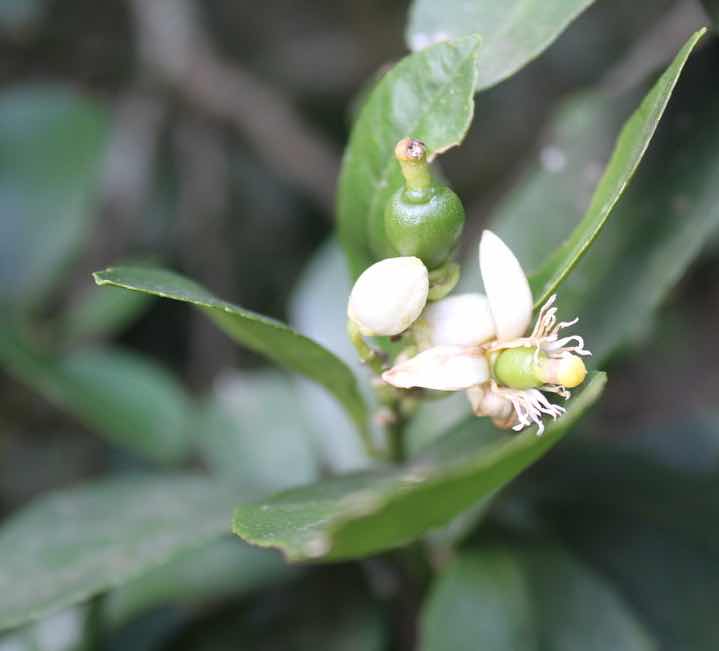
The bees also love the flowers on the citrus trees; and we enjoy the juice in our iced tea and on salads. Lime nutrition is loaded with anti-tumour phytonutrients; the fruit tastes and smells divine.
Citrus helps reduce the inflammation of arthritis and the chances of early senility[4].
If you watch carefully, you'll see that the bees never fly from a lime tree to the Halleria lucida; they are very plant-specific and even put the nectar and pollen from different species in separate areas in the hive.
Nevertheless they are "generalist foragers" visiting many
different plant species; same as we humans should be doing. Bees become
very weak when kept on fields of monocultures.
Read more about Halleria lucida from Dr Boomslang[3]. Google them if you live in the Pretoria area.
Spekboom for bees
Another great favourite is the Spekboom in South Africa; it too is easy to grow.
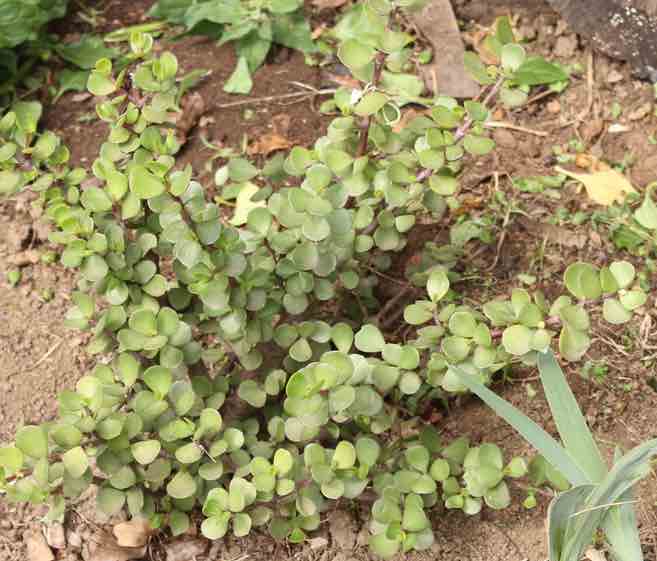
African dogwood tree for bees
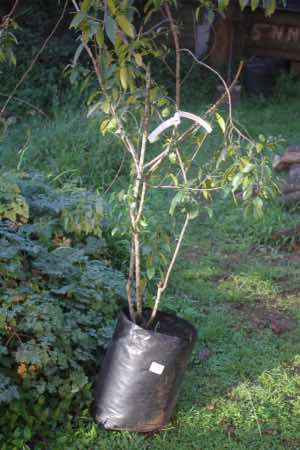
The African dogwood tree in all honesty is grown by beekeepers mainly for the bitterness it provides for our t'ej; in similar manner to hops. It is especially for those who love to brew with honey. But its flowers are also loved by many insects and sunbirds for the nectar.
More bee-friendly plants
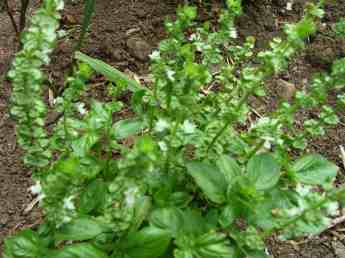 Sweet basil
Sweet basilFew plants bring more pleasure and wellness to both humans and bees than the basil family; it actually belongs to the mints. And it's indigenous to both Africa and SE Asia.
Humans go crazy over the leaves for pesto and the bees for the flowers. It contains many wonderful aromatic compounds like eugenol which is why it may remind us of the scent of cloves.
Like dopamine eugenol is produced from an amino acid called tyrosine; it is found in many foods such as chicken, avocados and dairy products.
All these bee-loving plants, bushes and trees are simply a part of our way of enjoying what is known as forest bathing.
When browsing use right click and Open Link in New Tab, or you may get a bad gateway signal.
Newsletter
Our newsletter is entitled "create a cyan zone" at your home, preserving both yourself and Mother Earth for future generations; and the family too, of course. We promise not to spam you with daily emails promoting various products. You may get an occasional nudge to buy one of my books.
Here are the back issues.
- Lifestyle and ideal body weight
- What are ultra-processed foods?
- Investing in long-term health
- Diseases from plastic exposure
- Intensive lifestyle management for obesity has limited value
- A world largely devoid of Parkinson's Disease
- The impact of friendly bacteria in the tum on the prevention of cancer
- There's a hole in the bucket
- Everyone is talking about weight loss drugs
- Pull the sweet tooth
- If you suffer from heartburn plant a susu
- Refined maize meal and stunting
- Should agriculture and industry get priority for water and electricity?
- Nature is calling
- Mill your own flour
- Bake your own sourdough bread
- Microplastics from our water
- Alternative types of water storage
- Wear your clothes out
- Comfort foods
- Create a bee-friendly environment
- Go to bed slightly hungry
- Keep bees
- Blue zone folk are religious
- Reduce plastic waste
- Family is important
- What can go in compost?
- Grow broad beans for longevity
- Harvest and store sunshine
- Blue zone exercise
- Harvest and store your rainwater
- Create a cyan zone at your home
Did you find this page interesting? How about forwarding it to a friendly book or food junkie? Better still, a social media tick would help.
- Bernard Preston homepage
- Beekeeping
- Plant Indigenous Trees for Bees
Address:
56 Groenekloof Rd,
Hilton, KZN
South Africa
Website:
https://www.bernard-preston.com